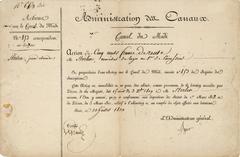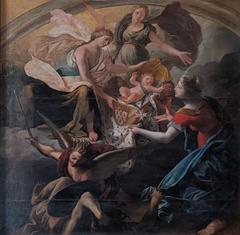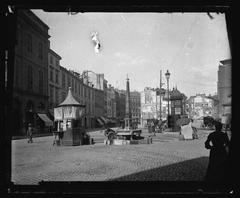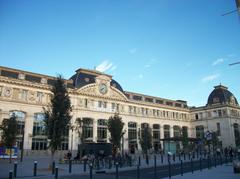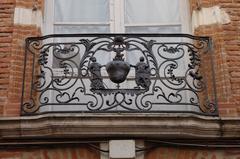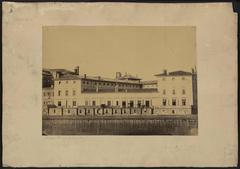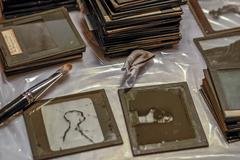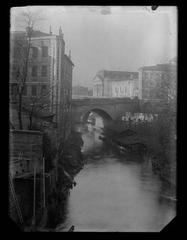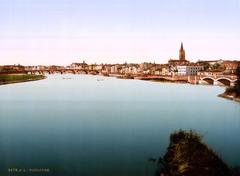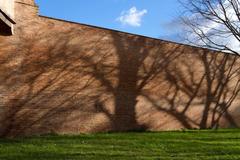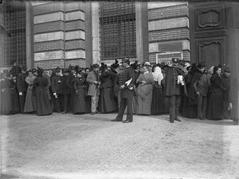Hôtel De Castagnier D’Auriac Toulouse: Visiting Hours, Tickets, and Travel Guide
Date: 14/06/2025
Introduction
Nestled within the heart of Toulouse’s historic center, the Hôtel De Castagnier D’Auriac is a distinguished example of the city’s Renaissance architectural legacy. Although still privately owned and typically closed to the public, its stately pink brick façade, ornate stone details, and elegant proportions offer a glimpse into the refined world of Toulouse’s urban aristocracy. This guide brings together everything you need to know—history, architecture, practical visitor tips, and nearby attractions—so you can fully appreciate this remarkable hôtel particulier and its place in Toulouse’s cultural tapestry (Patrimoine de Toulouse, Monumentum).
Table of Contents
- Historical Overview
- Architectural Features
- Visiting Hours and Ticket Information
- Guided Tours and Special Events
- Location and Accessibility
- Nearby Attractions
- Practical Visitor Tips
- Frequently Asked Questions (FAQ)
- Conclusion
- References and Further Reading
Historical Overview
The Hôtel De Castagnier D’Auriac was built in the late 16th century, during Toulouse’s economic boom fueled by the pastel (woad) trade. Commissioned by the Castagnier family—successful merchants who ascended to nobility—the mansion exemplifies the opulent lifestyle of the city’s upper class. Its history is closely tied to Toulouse’s transformation from a medieval trading post to a hub of Renaissance culture and wealth. Over time, the mansion witnessed architectural updates, reflecting evolving tastes and the city’s ongoing prosperity (Le Décodé, POP: Plateforme ouverte du patrimoine).
Recognized as a Monument Historique since 2005, the Hôtel De Castagnier D’Auriac’s façades, roofs, and staircases are protected as part of Toulouse’s invaluable architectural heritage.
Architectural Features
The mansion’s exterior is instantly recognizable, thanks to its classic pink brickwork—a hallmark of Toulouse, also known as “La Ville Rose.” Key architectural highlights include:
- Monumental Portal: An ornate, sculpted stone entrance that asserts both grandeur and privacy.
- U-Shaped Plan: The building wraps around a central paved courtyard, typical of 18th-century hôtels particuliers.
- Decorative Ironwork: Elegant balconies and window grilles reflect the craftsmanship of the period.
- Classical Elements: Pilasters, cornices, and carved coats of arms hint at the social status of its original occupants.
Inside, the mansion is known for its wide staircases and neoclassical décor, though public access is rare. These features embody the transition from defensive medieval homes to the openness and comfort of Renaissance living (Le Décodé, Monumentum).
Visiting Hours and Ticket Information
Address: 19 Rue Ninau, 31000 Toulouse
- Regular Access: The Hôtel De Castagnier D’Auriac is a private residence and is not generally open for public interior viewing.
- Exterior Viewing: The façade and architectural details can be admired from Rue Ninau at any time, making it a rewarding stop on a walking tour of the city’s historic center.
- Special Access: Interior visits are sometimes permitted during the annual European Heritage Days (Journées Européennes du Patrimoine) in September, or on rare occasions for pre-arranged guided tours (Toulouse Tourisme).
- Ticketing: There is no regular entry fee or ticket system. Should special events or tours be organized, details and ticketing information are typically announced by the Toulouse Tourist Office.
Guided Tours and Special Events
While the mansion is not ordinarily open to the public, it is sometimes included in guided walking tours that explore Toulouse’s hôtels particuliers. The Toulouse Tourist Office and local guides offer themed itineraries that may feature exterior explanations or, on special days, interior visits.
- European Heritage Days: Usually held in mid-September, these events provide rare access to private heritage buildings like the Hôtel De Castagnier D’Auriac, sometimes including guided tours led by experts (Toulouse Tourisme).
- Cultural Events: Check with the Tourist Office for information about architectural festivals or university-led tours that might include this site.
Location and Accessibility
Getting There:
- By Metro: Line A (Esquirol station) or Line B (Carmes station); both are within a 10-minute walk.
- By Bus: Several central lines pass near Rue Ninau.
- Cycling: Toulouse’s VélôToulouse bike-sharing stations are nearby (Mappy).
- Car: Limited street parking; closest garages are Parking Esquirol and Parking Carmes.
Accessibility: The surrounding streets are mostly flat but feature some cobblestones and narrow sidewalks typical of historic districts. Public transportation is accessible and recommended for most visitors.
Nearby Attractions
The mansion’s central location makes it a perfect starting point for exploring other highlights of Toulouse:
- Place du Capitole: Toulouse’s majestic main square and city hall.
- Basilique Saint-Sernin: A UNESCO-listed Romanesque basilica (PlanetWare).
- Jacobins Convent: Known for its Southern Gothic architecture and palm-shaped columns.
- Quartier Saint-Cyprien: Vibrant neighborhood with markets and art galleries (Taste of Toulouse).
- Musée du Vieux Toulouse: Located in another historic hôtel particulier, offering insights into the city’s past (PlanetWare).
Practical Visitor Tips
- Photography: The façade is especially beautiful in early morning or late afternoon light. Please be respectful of the building’s private status and avoid intrusive photography.
- Guided Tours: For a deeper understanding, join a walking tour led by the Toulouse Tourist Office or local guides, who may provide additional context and access to other nearby mansions (Toulouse Guided Walks).
- Amenities: While the mansion itself does not offer visitor services, the surrounding district is full of cafés, restaurants (including Brasserie de l’Opéra and Le Bibent), and markets (Taste of Toulouse).
- Language: French is the primary language, but most tourist information is available in English and other languages.
- Safety: Toulouse is generally safe, but standard precautions with personal belongings are advised.
Frequently Asked Questions (FAQ)
Q: Can I visit the interior of Hôtel De Castagnier D’Auriac?
A: No, the interior is not normally open to the public. Access is occasionally granted during special heritage events.
Q: Is there an entry fee?
A: No regular entry fee; the exterior can be viewed freely. Special tours may require tickets.
Q: Are guided tours available?
A: Yes, join city walking tours or special events for expert insights and the possibility of interior access.
Q: How do I get there by public transport?
A: Take Metro Line A to Esquirol or Line B to Carmes, then walk less than 10 minutes to Rue Ninau.
Q: Is the area accessible for visitors with reduced mobility?
A: The area is generally accessible, though some streets have cobblestones and narrow sidewalks.
Conclusion
The Hôtel De Castagnier D’Auriac stands as a jewel in Toulouse’s urban crown, illustrating the city’s Renaissance splendor and enduring aristocratic heritage. While interior visits are rare, the mansion’s distinctive pink brick façade and location in the city’s vibrant historic center make it a must-see for architecture lovers and cultural travelers alike. Plan your walk to include this remarkable building, and consider timing your trip with heritage days or guided tours for a richer experience.
For the latest information on access, events, and guided tours, consult the Toulouse Tourist Office and consider downloading the Audiala app for audio guides and curated itineraries.
 (
(
